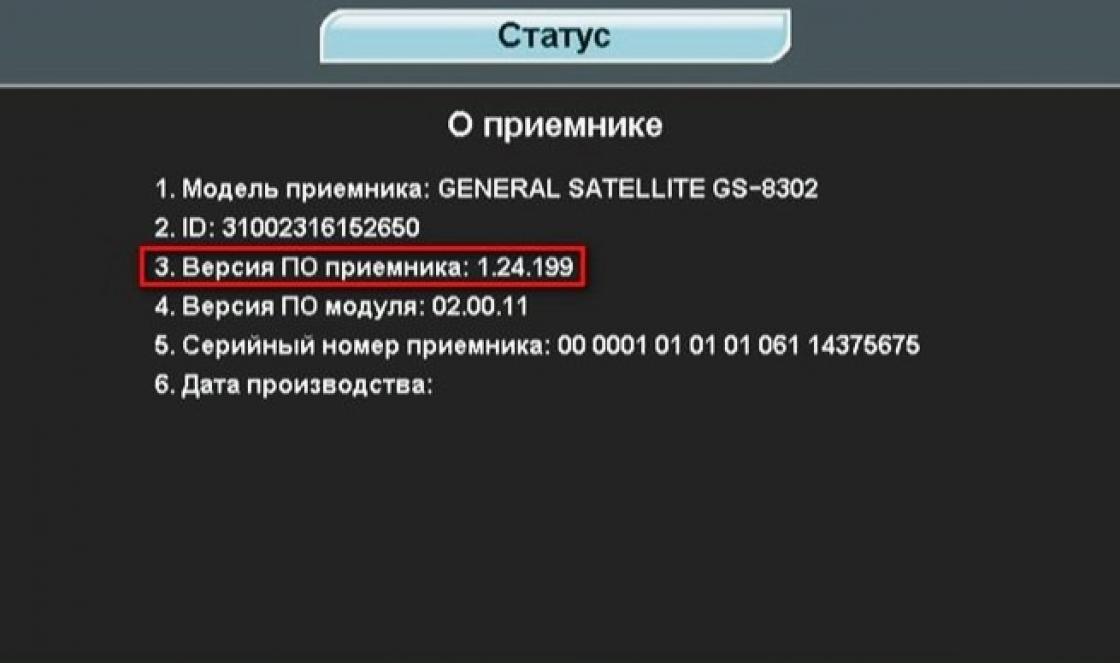Information stored on laptop disks is at a greater risk of leakage than on home desktop PCs. After all mobile computer many owners carry with them and sometimes leave them unchecked. To prevent your data from falling into the wrong hands, it must be protected. The easiest way to do this is with a password.
Let's talk about how to put a password on a laptop and what method of protection will be optimal for you.
Three lines of laptop password protection
The initial level of protection is setting a password for access to the OS. Allows you to hide the contents of the disk from prying dummies, but not from those who are seriously aiming at data theft.
The next - more secure way - is to set a password on the laptop BIOS. To hack it, an attacker will have to work very hard.
The maximum level of protection is provided by setting a password on hDD... But it is better not to use this option unless absolutely necessary. Read on to find out why.
Windows password protection
What is good
Simplicity and safety.
What is bad
Low reliability. Easy to crack. It is not suitable for protecting especially valuable information.
Who suits
For those who want to protect personal files from the access of others, for example, family members or colleagues.
How to install on Windows 7
To set a password for a Windows 7 account, just take 3 steps:
- Open the Windows Control Panel and go to the "User Accounts" section.

- Click "Create a password for your account."

- In the next window, fill in the fields shown below: enter the passphrase, its confirmation and a hint for a reminder. The latter is optional. We save the setting and reboot.

Now, every time you turn on your computer, Windows will require you to authenticate.

How to install on Windows 8-10
For the first time, Windows 8 users were able to use not only a symbolic password, but also a picture password to log in to the system. The latter, if well thought out, is no less reliable than the text one, but it is much easier to remember.
Windows 10 introduces PIN and Windows Hello features in addition to password protection. A PIN is a short combination of numbers that a user can enter instead of a Microsoft account password. According to the developers, this is done to simplify the logon for those who use the computer in a safe environment, for example, only at home.
Windows Hello is a relatively new feature. Its essence lies in the recognition of the user's fingerprint, face or iris by the system. It is convenient, but it does not work on all devices and is currently not fully debugged.
The section for managing all types of passwords in the "eight" and "ten" is located in the "Settings" application. In Windows 10, it is opened through the Start menu (a gear-shaped button).

In Windows 8 (8.1), for this you need to call the charms charm, click "Settings" and then - "Change computer settings."
Further actions on both systems are very similar, so we will consider them only on the example of Windows 10.
While in the "Settings" application, open the "Login Settings" section, select the desired type of password and click "Add".

- To create a text password for your account, open the "Password" subsection. We will enter the code phrase, confirmation and hint in the appropriate field.

Pin and picture password are available for Microsoft account only (these functions are inactive under local administrator).
- To set the PIN code (in Windows 10), enter a few numbers in the indicated fields, confirm them and click OK to save. Unlike Microsoft's online account, the PIN will only work on that device.

- To create a picture password, upload any picture to the application. Please confirm your agreement to use this picture when creating your password. After that, draw on the image several simple shapes that are easy for you to remember, and repeat the drawing 3 times.

BIOS and disk password protection
What is good
Possesses high resistance to breaking. Not only protects the entrance to the operating system, but also prevents changing BIOS settings (including preventing the laptop from booting from another media).
What is bad
If you forget your password, it is extremely difficult to gain access to protected media. Sometimes it’s impossible.
Who suits
Those who store especially valuable data on a laptop.
What is special
Unlike desktop PCs, the BIOS password on most laptops cannot be reset by disconnecting the flash memory battery, which stores the BIOS microcode with all settings. He's not there. Passwords are recorded in a separate non-volatile eeprom memory, which is not erased when the power is turned off.
Forgotten password on some laptop models, you can reset it using special passphrases. The methodology for compiling these phrases on Asus, Lenovo, HP and other laptop brands is not the same and is far from always effective. Often the problem is solved only by flashing the storage module on the programmer.
Password hard drive stored in the protected area of \u200b\u200bthe magnetic media, as well as in the controller's memory. When the user enters the password, both copies are matched. This dual method of storing the password ensures maximum data security on the disk, but in case of forgetting, restore or reset it impossible... Information will be lost irretrievably.
How to setup
- After turning on the laptop, press the key combination to enter the BIOS Setup Utility.
- Use the arrow keys to navigate to the Security tab. The required options are circled in the screenshot. Select “Change (Set) Supervisor Password”, press Enter and enter the passphrase in the field that appears.

- If you want to set a password for a user (user rights in BIOS are limited to viewing and changing minor settings, such as date and time), select "Change (Set) User Password" and do the same.
- The option to set a password on a disk is located here and is called “Change (Set) HDD Password”. If it is not there, then the computer does not support it.

- Press F10 to save the setting and close the utility.
Now you have to enter passwords every time you turn on the laptop, without them booting Windows and access to information will be denied.
Hello to all! Today I will show you a non-standard, but universal way to put a password on a computer for any version of Windows! But I will show on Windows 7, 8, 10!
Method 1
First, press the key combination WIN + R
and introduce control.exe / name Microsoft.UserAccounts

Method 2
Go to control Panel — —


How to put a password on a windows 7 computer
In Windows 7, after you enter the command, a window appears. Push Create a password for your account... If you have several accounts and want to put on another, then select the management of another account and select the one you need.

Now we enter the password that you want to use to log in. Well, a hint if you suddenly forget. It's better to remember later than to waste time on.

That's it, now when you boot Windows 7, there will be a window with the password that you set.
How to put a password on a windows 8 and 8.1 computer
Again, at the very beginning of the article, we perform the procedure by entering the command in the execute line. A window appears.


Now enter the password and hint if you forget.


All. Windows 8 password has been created!
How to put a password on a windows 10 computer
Again, we do the actions that at the beginning of the article and after that the following window appears:

But in 10k, again we go to Changing the account in the computer settings window... Further login parameters - where is the password field, click add.

Enter the password and hint if you suddenly forget.


That's it, the Windows 10 password has been created!
In this way, you can create a password for any version of the Windows operating system.
Setting a password on a Windows operating system is an important step in organizing data loss protection. In addition, any user restrictions regarding access to data automatically become restrictions for viruses, as they prevent their spread. The sequence of steps for organizing protection for different versions of Windows is similar, but there are some differences. In addition to instructions on how to set a password for windows computer XP, 7, 8, 10, in this manual you can find information on protecting the BIOS and individual files.
Windows XP protection
Windows XP password installed in section Control panels PC " user accounts". Consider the sequence of actions:
After that, all attempts to enter the configurable account, will lead to a dialog for entering the specified sequence.
Windows 7 protection
The answer to the question of how to put windows 7 passwordis simple enough:

After the next exit from the PC operating system, an attempt to boot it under the control of this user will lead to an authorization dialog.
Window 8 protection
The problem of how to set a password on Windows 8 is solved in a slightly different way:

Windows 10 protection
Now let's look at how to set a password on Windows 10. This task is solved in just four steps:

Windows Phone protection
Installing protection on a smartphone running Windows is not as easy as putting a password on Windows 10 for a PC, but careful implementation of the following steps will solve this problem too:

It is important to understand that too low a value will interfere with the comfortable use of the phone, and too large will negatively affect the reliability of protection. Recommended length is 8-10 characters.
BIOS protection
The question often arises of how to put a password on a computer without entering Windows 7, 8 or 10. This opportunity is provided by BIOS... The main advantage of using it to organize protection is that the user must enter the code sequence immediately after turning on the computer, and only a hard reset of the BIOS will help the attacker bypass the lock.
Password entry activation starts with entering BIOS. To do this, press the Del key immediately after turning on the PC. Perhaps your BIOS version uses a different key for this, but in any case it should be indicated on the startup screen of the computer. There are many versions of BIOS, but the names of the main sections are the same in almost all.
Consider the sequence of steps to set a password:


Lock shortcuts
Many users of desktop operating systems have the question of how to put a password on a shortcut or folder. There are many solutions to this problem, since in these cases you should use external programs, such as LocK-A-FoLdeR, WinRaR, Folder Lock.
Outcome
So, in this article, we studied in detail how to put a password on a Windows 10 computer, as well as on computers or laptops with previous versions: 7, 8 and XP. We reviewed the procedure for installing protection on Windows Phone. They also showed how to set up protection at the very beginning of your PC boot at BIOS startup. We hope you find this article useful.
Related Videos
Please note that you must use a local Windows account with administrator rights to complete most of the instructions in this article.
How to put a password on a Windows computer
If other people have access to your computer, it's wise to password protect Windows. This way your settings and data will be safe: no one can view or change them without special knowledge. Windows will ask you for a password when you turn on your computer, when you change your account, or after waking up from hibernation.
- Open the section "Start" → "Settings" (the icon in the form of a gear) → "Accounts" → "Login Options".
- Click Add under Password.
- Fill in the fields as prompted by the system and click "Finish".
How to set a password on Windows 8.1, 8
- In the right side panel, click Settings (the gear icon) → Change computer settings. In the menu of the window that opens, select "Accounts" (or "Users"), and then "Login Options".
- Click on the "" button.
- Fill in the fields, click Next and Finish.
How to set a password on Windows 7, Vista, XP
- Open "Start" → "Control Panel" → "User Accounts".
- Select the required account and click "Create password" or immediately click "Create password for your account".
- Fill in the fields using the system prompts and click on the "Create password" button.

If outsiders do not have physical access to your computer, it may be better to disable protection. This eliminates the need to enter a password each time the system starts.
- Use the keyboard shortcut Windows + R and type at the command prompt netplwiz (or control userpasswords2if the first command doesn't work). Hit Enter.
- In the window that opens, select in the list the account for which you want to remove the password, and uncheck the box next to the item "Require username and password to be entered". Click OK.
- Enter the password, confirm it and click OK.
Windows will stop prompting for a password only when you turn on your computer. But if you lock the screen (Windows + L keys), log off, or the computer goes into sleep mode, the display will still ask for a password.
If the option "Require username and password" is unavailable or you want not to disable, but completely remove windows password, try another way for more advanced users.
To do this, open the Account Management section using one of the instructions at the beginning of this article.
If the open section says that you are using a Microsoft online profile (login by email and password), disable it. Then use the system prompts to create a local profile, but leave the password fields blank in the process.
After you disable your Microsoft account, the system will stop syncing your settings and files on different computers. Some applications may refuse to work.
If the local profile is initially active in the account management menu, then simply change the current password, leaving the fields for the new password blank.
When you delete an old password, the system will never ask you for it until you add a new one.
How to remove a password when waking up from sleep mode
If you disable the password prompt when windows startup, the system may still ask for it on wakeup. But you can deactivate this feature separately using these instructions.

- In the search bar in Windows, enter "Power supply" and click on the link found to the section with the same name. Or find it manually through the "Control Panel".
- Click "Prompt for a password on wakeup", then "Change settings that are currently unavailable" and check the box next to "Do not prompt for a password."
- Save your changes.
How to remove password when waking up Windows XP
- Open the section "Control Panel" → "Power Options".
- In the window that appears, open the "Advanced" tab and uncheck the box next to the item "Prompt for a password when exiting standby mode".
- Save your changes.
If you've forgotten your password and can't log into your local Windows administrator profile, you don't need to reinstall the OS. There is an easier way out: reset password protection. To do this, you will need another computer, a USB drive, and a free password reset utility.
Create a bootable USB drive on another PC

- Download the Lazesoft Recover My Password installer to any accessible computer.
- Run the downloaded file and complete the installation.
- Connect the USB flash drive to your computer. If necessary, make a copy of the files stored on it, as all information will have to be deleted.
- Open Lazesoft Recover My Password, click Burn Bootable CD / USB Disk Now! and create a bootable USB drive using the program prompts.
Boot your computer with a USB stick
- Insert the prepared USB drive into the computer for which you forgot the password.
- Turn on (or restart) the PC and, as soon as it starts to boot, press the key to go to BIOS settings. This is usually F2, F8, F9 or F12 - depending on the hardware manufacturer. Most often, the required key is displayed on the screen during BIOS boot.
- While in the BIOS menu, go to the Boot section if the system did not redirect you there right away.
- In the Boot section, place the USB flash drive in the first place in the list of devices that appears on the screen. If you don't know how to do this, take a look around - there should be clues about management nearby.
- Save your changes.
If the BIOS is also protected by a password that you do not know, then you cannot reset Windows password protection with Lazesoft Recover My Password.
Perhaps instead of the classic BIOS, you will see a more modern graphical interface. Moreover, even in various older versions BIOS settings may differ. But in any case, the procedure will be approximately the same: go to the Boot boot menu, select the desired USB drive as the source and save the changes.
After that, the computer should boot from the flash drive on which the Lazesoft Recover My Password utility is written.
Reset your password in Lazesoft Recover My Password
- Select Lazesoft Live CD (EMS Enabled) and press Enter.
- Reset your account password using Lazesoft Recover My Password hints.
- Reboot.
After these steps, Windows will stop asking for the old password, and you can set a new one according to the instructions at the beginning of the article.
Somehow it so happened that we have not yet talked about the most important thing, namely how to set a password on a computer. The truth about that, I already wrote, but now there are few users working in this system, so it's time to talk about this problem for new operating systems such as Windows 7, 8.1 and 10. This is what we will now do.
Of course, this is not a panacea. If you want and know how, you can hack any protection and pick any password, but for ordinary users (from children, curious relatives and your workmate), simply setting a password on your computer works well.
Today we will consider setting a password for three operating systems at once. Surely some of these descriptions will be useful to you. You can also set a password on the BIOS, but we'll talk about that another time. And now I will tell you how to set a password under an administrator account.
The first thing to do is come up with a password that you want to set on your computer. There should not be any names or dates of birth, because such passwords are cracked one, two, three times. You need a good password of 8-15 characters, which will contain both numbers and letters. The main thing is that you can remember it, or write it down somewhere secretly from prying eyes.
When entering a password, during installation, do not rush and carefully look in which layout (Russian or English) you enter it, and I had cases when people, after setting a password, could no longer enter their system, and I had to crack it.
Windows 7
IN operating system Windows 7 password is set like this:
The fastest way:
- Open the menu Start.

- Click on your account picture.
- In the window that opens on the right, select the link " Create a password for your account».

- A window will open in which you need to write a password and a hint twice.

Write the password in 8-15 characters, and the hint is such that no one will guess about your password.
- We press the button " Create a password».
Now, when you restart or turn on your computer, you will need to enter your password.
If you need to move away from the computer for a while, press simultaneously the keys Win + L and the computer will be locked. And to unlock the computer you need to press any key on the keyboard or move the mouse and enter your password.
Set a password on a computer withWindows 8.1
In Windows 8.1, there are several ways to set a password on your computer. I will describe one of them to you.
right click on the menu button Start, and select the item Control Panel.

In the Control Panel we find “ Accounts and family safety"And click on the item" Change account type«.

Select your account and press the button " Rename«.

In the next window, select the item " Create a password«.


You can set a password through the Options (icon on the taskbar). But the method described above is much simpler.
Set a password on a computer withWindows 10
In the operating room windows system 10 password is set via Parameters... You can get there in several ways:
- Open the menu Start and select the gear icon in the bottom left. That's what it is Parameters.

- Right click on the menu Start and in the context menu click on the link Parameters.

- Click on the search icon and at the bottom in the search box write the word “ parameters"(Without quotes). A list of all system parameters appears. We just need Parameters with the image of a gear.



I already had a password, so it says “ Edit". But everything else is done exactly as shown in the pictures.
In the first column we write our password. In the second we repeat it, and in the third we write a hint for ourselves. Write a hint so that no one else will guess what password you have set. Otherwise, all your efforts will be in vain.


That's all! You can restart your computer and try to log in with a password.
If something is not clear - ask questions in the comments. I will answer all your questions.





